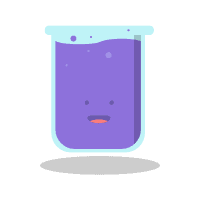
NCSCOS Grade 7 Science - 7.L.1.4 Body Systems Diagnostic- (Systems for Control- Nervous, Endocrine, Immune)
Quiz by NCDPI
Grade 7
Science
North Carolina Standard Course of Study
Feel free to use or edit a copy
includes Teacher and Student dashboards
Measures 1 skill from
Measures 1 skill from
Track each student's skills and progress in your Mastery dashboards
With a free account, teachers can
- edit the questions
- save a copy for later
- start a class game
- automatically assign follow-up activities based on students’ scores
- assign as homework
- share a link with colleagues
- print as a bubble sheet
10 questions
Show answers
- Q1Which of these is one function of the nervous system?controls body functionssupplies the blood with oxygensupports body posturecarries blood to and from the heart30s7.L.1.4
- Q2Which cells help to destroy pathogens such as bacteria that enter the human body?liver cellsbrain cellsred blood cellswhite blood cells30s7.L.1.4
- Q3Functions of Organ Systems System 1 Digest and absorbs food System 2 Moves oxygen from the external environment into the body System 3 Defends the body from invading microorganisms and viruses System 4 Hormones to regulate body metabolism, growth, and reproduction The organs in System 3 are MOST likely part of thedigestive system.endocrine system.immune system.respiratory system.30s7.L.1.4
- Q4What organ system in the human body contains the pituitary gland, hypothalamus gland, and thyroid gland?endocrine systemreproductive systemexcretory systemcirculatory system30s7.L.1.4
- Q5The circulatory system and the endocrine system work together in the human body. Which describes one way in which these systems interact?absorbing nutrients from food and transporting them to cells in the bodyreleasing hormones and transporting them to cells of the bodytaking in oxygen and transporting it to cells of the bodycollecting waste products from cells and transporting out of the body30s7.L.1.4
- Q6The brain, spinal cord, and nerves are organs that perform which primary function?producing male and female gametessupporting the body and enabling it to moveconducting messages to coordinate body functionstransporting oxygen, wastes, and nutrients throughout the body30s7.L.1.4
- Q7What statement is true about the immune system?It produces antibodies to fight bacteria.It produces new cells to carry oxygen.It produces electrical signals to control the body.It produces chemicals to regulate growth.30s7.L.1.4
- Q8The body’s response to a viral infection is toproduce additional white blood cells to kill the virus.increase the secretion of enzymes to digest the virus.send more blood through the kidneys to filter out the virus.increase fluid intake to flush the virus out.30s7.L.1.4
- Q9What happens when your hand is near an open flame?The brain is required to decide the resulting action.Nothing happens unless you see your hand on the flame and decide to move your hand away.Sensory neurons process incoming information and determine a response automatically.Interneurons detect the change in temperature of the environment.30s7.L.1.4
- Q10What part of the body receives information from the senses?heartstomachbrainlungs30s7.L.1.4